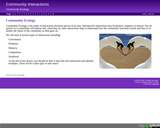
Introduction to community interactions for AP Biology.
- Subject:
- Biology
- Life Science
- Material Type:
- Lesson
- Author:
- Deb Henry
- Date Added:
- 03/19/2018

Introduction to community interactions for AP Biology.

This resource is a video abstract of a research paper created by Research Square on behalf of its authors. It provides a synopsis that's easy to understand, and can be used to introduce the topics it covers to students, researchers, and the general public. The video's transcript is also provided in full, with a portion provided below for preview:
"The gut microbiome interacts intimately with its human host, both in health and in disease. A recent study examined how different states of the gut microbiome might be linked to varying degrees of disease in rats. Researchers exposed rats to different concentrations of dextran sodium sulfate (DSS), a polysaccharide known to induce human-like colitis. The effects on the intestinal microbiome over time were tracked by gene profiling. The results provide some of the first experimental evidence of “alternative states” in the rat intestinal ecosystem. These are distinct microbial profiles related to markers of disease. Importantly, these alternative states were found to be tied to both the host and microbiome, rather than one or the other. That led to a conceptual model of how host inflammatory status and microbiome status interact and how the whole ecosystem may slip into and out of different states of disease..."
The rest of the transcript, along with a link to the research itself, is available on the resource itself.

Biology is designed for multi-semester biology courses for science majors. It is grounded on an evolutionary basis and includes exciting features that highlight careers in the biological sciences and everyday applications of the concepts at hand. To meet the needs of today’s instructors and students, some content has been strategically condensed while maintaining the overall scope and coverage of traditional texts for this course. Instructors can customize the book, adapting it to the approach that works best in their classroom. Biology also includes an innovative art program that incorporates critical thinking and clicker questions to help students understand—and apply—key concepts.
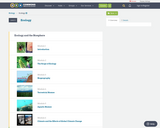
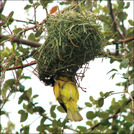
By the end of this section, you will be able to:Discuss the predator-prey cycleGive examples of defenses against predation and herbivoryDescribe the competitive exclusion principleGive examples of symbiotic relationships between speciesDescribe community structure and succession

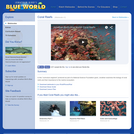
In this video, Jonathan examines the biology of coral reefs and their importance to the marine ecosystem. Please see the accompanying lesson plan that discusses pH and ocean acidification for educational objectives, discussion points and classroom activities.

In this activity, student teams identify the locations of coral reefs around the world, examine infrared satellite images of the Earth, and research the impacts that are threatening the survival of coral reefs. Each team creates a short oral presentation describing the coral reef they have researched. Students then plot on a composite map the locations where coral bleaching is occurring. Student worksheets, a teacher guide, and assessment rubric are included. This activity is part of Coastal Areas: Coral Reefs in Hot Water, part of the lesson series, The Potential Consequences of Climate Variability and Change.

This resource is a video abstract of a research paper created by Research Square on behalf of its authors. It provides a synopsis that's easy to understand, and can be used to introduce the topics it covers to students, researchers, and the general public. The video's transcript is also provided in full, with a portion provided below for preview:
"All living things need phosphorus to survive. However, its low availability in soil is often a limiting factor for plant and microbial growth. Microorganisms in the plant root-soil interface (rhizosphere) can convert non-labile phosphorus into bioavailable forms. One way microbes do this is the mineralization of organic phosphorus compounds like phytate. Rising atmospheric CO₂ levels may accelerate mineralization, but the molecular mechanisms are not yet understood. Recent research confirmed that elevated CO₂ (eCO₂) increased the mineralization of phytate in the rhizosphere of wheat. Tracing the carbon flow showed that plants grown under eCO₂ increased the release of bioavailable carbon belowground, which corresponded to increased microbial growth and altered community composition. The bacterial community under eCO₂ favored groups of bacteria capable of degrading aromatic phosphorus compounds and the mycorrhizal fungi benefited from the increased supply of phosphorus and carbon..."
The rest of the transcript, along with a link to the research itself, is available on the resource itself.

This resource is a video abstract of a research paper created by Research Square on behalf of its authors. It provides a synopsis that's easy to understand, and can be used to introduce the topics it covers to students, researchers, and the general public. The video's transcript is also provided in full, with a portion provided below for preview:
"The symbiotic microbial community that many animals have floating freely in their gut is critical to their health and well-being. But some insects, like cereal weevils, take this a step further and host bacteria inside their own cells. These endosymbiotic bacteria reside in massive, specialized cells organized in an organ called the bacteriome. Previous studies have suggested that the cereal weevil bacteriome participates in immune responses. But how, or if, the bacteriome protects its resident bacteria from that immune activity remains unclear. To answer this, researchers activated the cereal weevil innate immune system with pathogen protein fragments and examined the gene expression changes in the bacteriome and its residents. Rather than differentiate between pathogens and symbionts, the cereal weevils protected their endosymbionts with physical separation..."
The rest of the transcript, along with a link to the research itself, is available on the resource itself.

The theory of how mitochondria, chloroplasts and other membrane-bound organelles in eukaryotic cell likely arose from a symbiosis between aerobic prokaryotes and host anaerobic eukaryotic ancestors. Developed by Lynn Margulis.

This resource is a video abstract of a research paper created by Research Square on behalf of its authors. It provides a synopsis that's easy to understand, and can be used to introduce the topics it covers to students, researchers, and the general public. The video's transcript is also provided in full, with a portion provided below for preview:
"BackgroundThe role of bacterial symbionts that populate octocorals (Cnidaria, Octocorallia) is still poorly understood. To shed light on their metabolic capacities, we examined 66 high-quality metagenome-assembled genomes (MAGs) spanning 30 prokaryotic species, retrieved from microbial metagenomes of three octocoral species and seawater. ResultsSymbionts of healthy octocorals were affiliated with the taxa Endozoicomonadaceae, Candidatus Thioglobaceae, Metamycoplasmataceae, unclassified Pseudomonadales, Rhodobacteraceae, unclassified Alphaproteobacteria and Ca. Rhabdochlamydiaceae. Phylogenomics inference revealed that the Endozoicomonadaceae symbionts uncovered here represent two species of a novel genus unique to temperate octocorals, here denoted Ca. Gorgonimonas eunicellae and Ca. Gorgonimonas leptogorgiae..."
The rest of the transcript, along with a link to the research itself, is available on the resource itself.
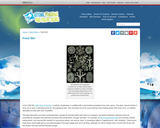
This article discusses the many lichens found in the Arctic and Antarctica and their unique characteristics.

This resource is a video abstract of a research paper created by Research Square on behalf of its authors. It provides a synopsis that's easy to understand, and can be used to introduce the topics it covers to students, researchers, and the general public. The video's transcript is also provided in full, with a portion provided below for preview:
"Most current knowledge about gut microbiomes has been obtained from studies on mammals, while the microbiomes of fish, the most diverse group of vertebrates (~33,000 species), are less well understood. Specifically, the major influencing factors and unique features of fish gut microbiomes remain unclear. To bridge this knowledge gap, a recent study analyzed the gut contents of 227 fish representing 85 different freshwater fish (FWF) and saltwater fish (SWF) species. rRNA sequencing revealed that Proteobacteria and Firmicutes were the two most abundant phyla, indicating a different composition from the typical vertebrate microbiome, which is composed mainly of Firmicutes and Bacteroidetes. Habitat (freshwater versus saltwater) more strongly influenced the host microbiome than host taxonomy or trophic level and the microbiome taxonomic and functional profiles were better indicators of a fish’s habitat than of its taxonomy..."
The rest of the transcript, along with a link to the research itself, is available on the resource itself.
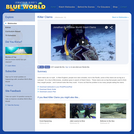
Giant clams are no myth. In New England, people love clam chowder, but in the Pacific, some of the clams are as big as a suitcase! In this video filmed in Micronesia, Jonathan goes in search of Giant Clams. These clams are so big that people used to think they caught people...and it almost looks like they could. It turns out that the real problem is that too many people are eating the clams. Please see the accompanying lesson plan for educational objectives, discussion points and classroom activities.
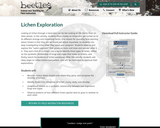
Looking at lichen through a hand lens can be like looking at life-forms from an alien planet. In this activity, students focus closely on lichen and get turned on to its different strange and interesting forms. One reason for spending time learning about lichens is that they can be found just about anywhere, so students can keep investigating lichen after they leave your program. Students observe and explore this “weird organism” that grows on rocks and trees and wonder what it is. They learn that it’s a lichen, use a key to identify three types of lichen, reflect on the symbiotic relationship of fungi and algae that make up lichens, and finally search for evidence of lichen succession. After this activity, students will likely begin to notice lichens everywhere, and will be motivated to continue their explorations.

This resource is a video abstract of a research paper created by Research Square on behalf of its authors. It provides a synopsis that's easy to understand, and can be used to introduce the topics it covers to students, researchers, and the general public. The video's transcript is also provided in full, with a portion provided below for preview:
"Domesticated edible insects are a sustainable protein source that has been gaining global attention. P. brevitarsis is one such species, and their larvae can also eat decaying organic waste and turn it into a plant-growth promoting mixture. But organic matter like this is high in lignocellulose, which is difficult to digest. In fact, these larvae lack the enzymes needed to break lignocellulose down on their own. So, researchers checked their microbiome for microbial genes able to fill in the gaps. The researchers established a comprehensive reference catalog of gut microbial and host genes. Between the two sets of genes, lignocellulose-degrading enzymes were abundant and highly diversified. P. brevitarsis larvae also selectively enriched their microbiome for lignocellulose-degrading microbes and had physiological adaptations that assisted in lignocellulose degradation..."
The rest of the transcript, along with a link to the research itself, is available on the resource itself.
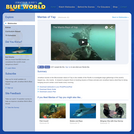
In this video, Jonathan travels to the Micronesian island of Yap in the middle of the Pacific to investigate large gatherings of the world's largest rayŰÓthe manta. A research program there is tracking dozens of these animals and Jonathan learns what they're doing hanging around certain coral heads every morning. Please see the accompanying lesson plan on tides for educational objectives, discussion points and classroom activities.

This resource is a video abstract of a research paper created by Research Square on behalf of its authors. It provides a synopsis that's easy to understand, and can be used to introduce the topics it covers to students, researchers, and the general public. The video's transcript is also provided in full, with a portion provided below for preview:
"Sponges are a diverse group of aquatic animals with porous bodies that produce a vast array of natural products, some with important medicinal properties, but their porous body structure also provides ample habitat for symbiotic microorganisms, which can account for up to 35% of their total body weight. Previous studies looking at the unique natural products produced by sponges have rarely taken this close relationship into account, making the extent to which microorganisms actually produce them unclear. To fill this gap, a team of researchers identified the chemical compounds found in the tissues of six sponge species from the Great Barrier Reef and their symbiotic microbes. Several compounds with potential roles in competition and defense against intruding organisms and oxidative stress were specifically attributed to the microbial cells, while the compounds produced by the sponge tissues may provide nutrients to the symbiotic microorganisms and aid in sponge defense..."
The rest of the transcript, along with a link to the research itself, is available on the resource itself.

This resource is a video abstract of a research paper created by Research Square on behalf of its authors. It provides a synopsis that's easy to understand, and can be used to introduce the topics it covers to students, researchers, and the general public. The video's transcript is also provided in full, with a portion provided below for preview:
"Both free-living and symbiotic chemosynthetic microbes are critical to the health of deep-sea hydrothermal vent ecosystems. A complex symbiotic microbe community lives in the cephalothorax of the shrimp Rimicaris exoculata, which thrives in diverse vent environments. However, the taxonomic and functional diversity of this community is not fully characterized, and how the microbes contribute to the shrimp’s success in vent colonization remains to be further studied. In a recent study, researchers used shotgun metagenomics to reconstruct and study symbiotic bacterial genomes in shrimp specimens from three vent fields with different geochemical characteristics. Forty-nine metagenome-assembled genomes were successfully reconstructed for shrimps from two of the fields. The communities were complex, and many microbes were shared between fields. However, behind an apparent functional redundancy, co-existing strains showed differences, highlighting niche partitioning between symbionts..."
The rest of the transcript, along with a link to the research itself, is available on the resource itself.